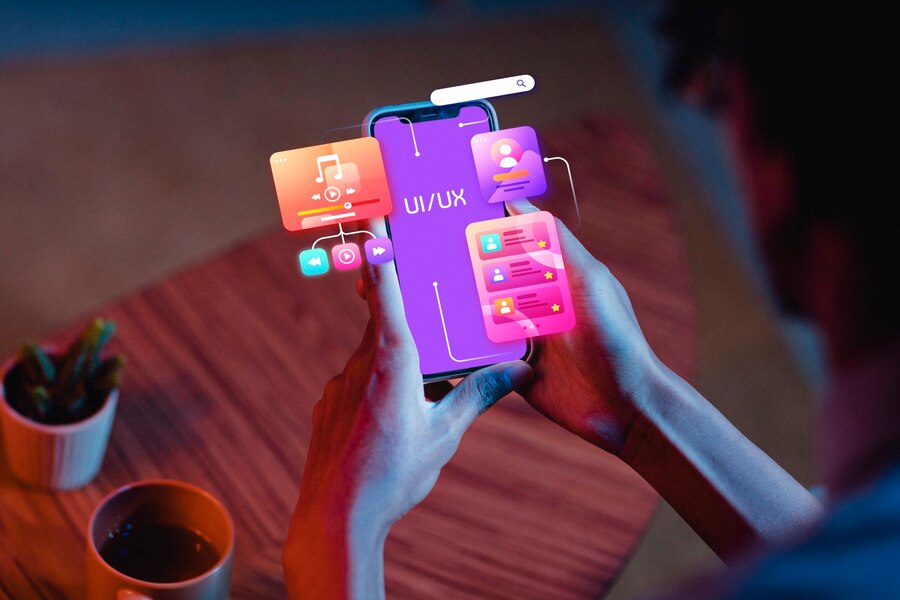In today’s fast-paced world, mental wellness has become more crucial than ever. With stress, anxiety, and sleep disorders affecting millions globally, the demand for effective solutions is at an all-time high. Apps like Calm have revolutionized the way we approach relaxation and mental well-being. If you’re considering building a Calm clone app focused on sleep sounds and trackers, you’re tapping into a market with enormous potential.
This article will guide you through the steps of creating a sleep sounds and tracker app like Calm, highlighting the essential features, development process, and potential revenue streams. Whether you’re a developer, entrepreneur, or business owner, this comprehensive guide will provide the insights you need to create a successful app in this niche.
Why Build a Calm Clone App?
The mental wellness app market is booming, with millions of users seeking tools to help them relax, meditate, and improve their sleep quality. Calm, with its user-friendly interface and vast library of sleep sounds, meditation sessions, and wellness programs, has become a market leader. However, there is always room for innovation and improvement.
By building a Calm clone app, you can enter this lucrative market, offering users a customized experience tailored to their needs. You can introduce unique features, focus on specific user demographics, or even integrate advanced AI-driven functionalities to stand out from the competition.
Essential Features of a Calm Clone App
To build a successful Calm clone app, it’s crucial to include the core features that users expect. Here are some of the must-have features for your app:
1. Sleep Sounds Library
One of the main attractions of Calm is its extensive library of sleep sounds. From nature sounds to white noise and ambient music, providing a wide range of options is essential for helping users relax and fall asleep.
2. Guided Meditations
Guided meditations are a key component of any wellness app. Offering meditation sessions for different purposes, such as relaxation, focus, or stress relief, will make your app versatile and appealing to a broader audience.
3. Sleep Tracker
A sleep tracker is a vital feature that allows users to monitor their sleep patterns, set goals, and track progress. Integrating advanced analytics can provide users with insights into their sleep quality and suggestions for improvement.
4. Breathing Exercises
Breathing exercises can help users reduce stress and anxiety. Including various breathing techniques and exercises can enhance the overall user experience and complement the app’s relaxation features.
5. Personalized Recommendations
Leveraging AI and machine learning to offer personalized content recommendations based on user behavior and preferences can significantly improve user engagement and satisfaction.
6. Daily Reminders and Notifications
Sending daily reminders and notifications can encourage users to stick to their relaxation routines. This feature can include reminders for bedtime, meditation sessions, or breathing exercises.
7. In-App Purchases and Subscriptions
Monetization is a crucial aspect of app development. Offering in-app purchases for premium content or subscription models for full access to the app’s features can generate consistent revenue.
8. User Profile and Progress Tracking
Allow users to create profiles where they can track their progress, set goals, and review their history. This feature adds a personal touch and encourages long-term usage.
9. Offline Access
Providing offline access to selected content, such as sleep sounds or guided meditations, ensures that users can enjoy the app even without an internet connection.
10. Social Sharing and Community Features
Building a sense of community within the app by allowing users to share their experiences or favorite content on social media can increase user engagement and help with organic growth.
Step-by-Step Guide to Developing a Calm Clone App
Building a Calm clone app requires careful planning and execution. Here’s a step-by-step guide to help you get started:
1. Market Research and Analysis
Before diving into development, conduct thorough market research to understand your target audience, their preferences, and the competition. Identify the gaps in existing apps and determine how your app can address these needs.
2. Define Your Unique Value Proposition
What will set your app apart from others in the market? Whether it’s a unique feature, a specific focus on a particular demographic, or an innovative approach to mental wellness, defining your unique value proposition (UVP) is crucial for standing out.
3. Design the User Interface (UI) and User Experience (UX)
The UI/UX design of your app plays a significant role in user retention. Focus on creating a clean, intuitive, and aesthetically pleasing interface that enhances the user experience. Consider the flow of the app, ease of navigation, and overall design consistency.
4. Choose the Right Technology Stack
Selecting the appropriate technology stack is essential for the app’s performance and scalability. Consider using cross-platform frameworks like React Native or Flutter to develop apps for both iOS and Android simultaneously. Ensure that your backend infrastructure can handle user data, content delivery, and analytics efficiently.
5. Develop Core Features
Start by developing the core features of your app, such as the sleep sounds library, meditation sessions, and sleep tracker. Ensure that these features are robust, reliable, and provide real value to the users.
6. Integrate AI and Machine Learning
Incorporating AI and machine learning can enhance the personalization and effectiveness of your app. Use these technologies to offer personalized content, analyze user data, and provide intelligent recommendations.
7. Test and Iterate
Rigorous testing is crucial to ensure that your app is free of bugs and provides a seamless user experience. Conduct beta testing with a small group of users, gather feedback, and make necessary improvements.
8. Launch and Market Your App
Once your app is ready, it’s time to launch it on the App Store and Google Play Store. Develop a comprehensive marketing strategy to promote your app, including social media campaigns, influencer partnerships, and targeted advertising.
9. Monitor Performance and User Feedback
After launch, continuously monitor the app’s performance and gather user feedback. Use analytics to track user behavior, identify areas for improvement, and roll out updates regularly.
10. Expand and Innovate
The journey doesn’t end after the app is launched. Continuously innovate by adding new features, expanding your content library, and exploring new monetization strategies to keep your app relevant and competitive.
Monetization Strategies for Your Calm Clone App
Monetizing your Calm clone app effectively is key to its long-term success. Here are some popular monetization strategies:
1. Freemium Model
Offer a basic version of the app for free while providing premium features or content through in-app purchases or subscriptions. This model allows users to try the app before committing to a purchase.
2. Subscription Plans
Implementing subscription plans is a common strategy for wellness apps. Offer monthly, quarterly, or annual subscriptions that grant users access to premium content and features.
3. In-App Purchases
Sell individual pieces of content, such as exclusive sleep sounds, meditation sessions, or sleep programs, as one-time purchases within the app.
4. Advertisements
Including advertisements in the free version of your app can generate revenue. However, ensure that ads do not disrupt the user experience, as this can lead to negative reviews and decreased user retention.
5. Partnerships and Sponsorships
Partner with wellness brands, meditation experts, or content creators to offer sponsored content or exclusive deals. This can enhance the app’s content offering and provide additional revenue streams.
Challenges in Developing a Calm Clone App
While the opportunity is significant, developing a Calm clone app also comes with its challenges:
1. Content Licensing
If you plan to offer pre-recorded sleep sounds or guided meditations, securing the rights and licenses for this content can be complex and costly. Consider creating original content or partnering with creators to avoid legal issues.
2. User Retention
Keeping users engaged with your app over the long term can be challenging. Regularly updating content, introducing new features, and maintaining a high-quality user experience are essential for retaining users.
3. Technical Challenges
Developing and maintaining a robust and scalable app requires significant technical expertise. Challenges such as handling large amounts of user data, ensuring data security, and providing a smooth user experience can be demanding.
4. Competition
The mental wellness app market is highly competitive, with established players like Calm and Headspace dominating the space. Differentiating your app and convincing users to switch can be tough.
Conclusion
Building a Calm clone app focused on sleep sounds and trackers is an exciting opportunity in the growing mental wellness market. By incorporating essential features, leveraging modern technologies, and addressing potential challenges, you can create an app that stands out and provides real value to users.
Whether you’re looking to enter the mental wellness space or expand your app development portfolio, the steps outlined in this guide will help you navigate the process and build a successful app. As mental wellness continues to gain importance in people’s lives, your app could be the key to helping them achieve a better, more relaxed state of mind.
Also Read: Headspace Clone App: Build Meditation & Sleep App Like Headspace



